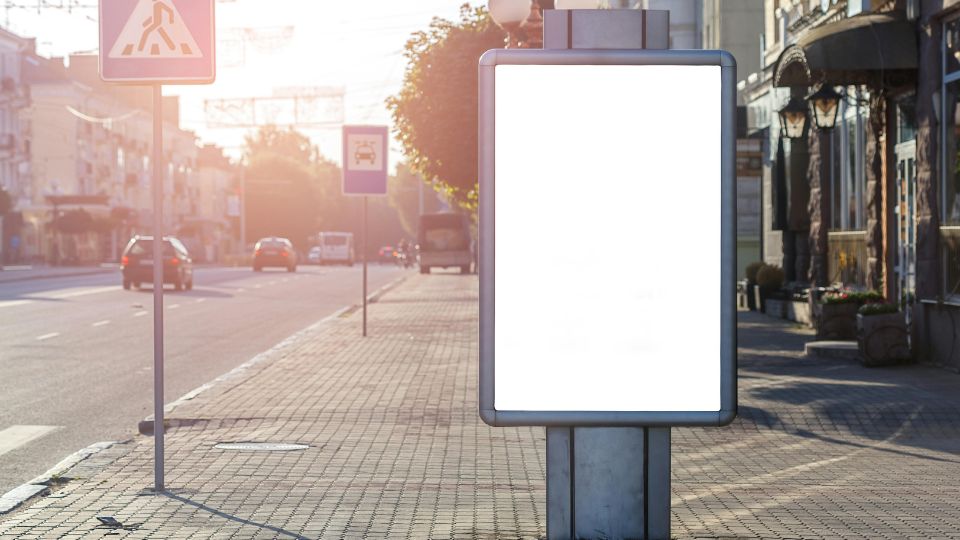Introduction: The First Big Leap
When Ankit, a first-time Amazon seller from Pune, finally crossed ₹50,000 in monthly sales, he celebrated with his team of one—himself. His niche product was gaining traction, his listing had a dozen glowing reviews, and the ads he had cautiously experimented with were beginning to bring in orders. If you’re still setting up, make sure you create your seller account the right way.
But after that high, came the lull.
Month after month, his revenue hovered in the ₹50K to ₹60K range. Despite increasing his ad spend, tweaking his listing, and adding more keywords, he just couldn’t scale beyond that threshold.
Sound familiar?
This is a common wall many Amazon sellers hit. The leap from ₹50K to ₹5 lakhs per month isn't just about luck or timing. It’s not about “hustling harder.” It’s about transforming how you think, how you operate, and how you optimize. In this guide, we’ll walk you through what really changes as your Amazon business scales—mindset, systems, product strategy, cash flow, and more.
Let’s dive deep into the journey of scaling amazon business from the ground up.
The Reality of Scaling on Amazon
At first glance, selling on Amazon seems straightforward: find a good product, set up your listing, run some ads, and you’re in business. And truthfully, at the ₹50K level, that’s often enough. A well-positioned product with some beginner hustle can earn that much, especially in high-demand categories.
But scaling to ₹5L/month is where the game shifts.
This phase introduces new problems. Suddenly you’re dealing with:
- Stockouts due to poor forecasting
- Margins vanishing because of higher PPC costs
- Refunds and returns that dent profitability
- Amazon fee surprises
- Cash getting trapped in slow-moving inventory
More importantly, what used to work at ₹50K stops working. Scaling isn't just about getting more sales—it's about handling the compounding complexity of ads, logistics, team, customer experience, and cash flow.
Mindset Shifts That Drive 10x Growth
To grow your Amazon store from 50K to 5 lakh, you have to upgrade your mindset from that of a seller to that of a business operator.
At the early stage, you may do everything yourself—product research, supplier negotiation, listing creation, customer support, and even packaging (if FBM). But that’s not scalable.
Once you pass the ₹1L/month mark, serious sellers start planning months in advance. They don’t wait for stock to run out to reorder. They don’t launch products on a whim. They think like CEOs—tracking metrics, running lean tests, investing in automation, and building playbooks.
One of the biggest mindset shifts is moving from reactive to proactive scaling:
- Forecast inventory cycles and plan working capital
- Use review automation tools and email follow-ups
- Plan launches based on keyword trends, not gut feeling
- Audit your listing and ad performance monthly
You don't scale by accident. You scale by design.
Data-Driven Product Decisions
At the ₹50K level, you may have launched one or two products that worked. But scaling requires consistent, data-backed decision-making.
You need to go beyond just checking BSR or review count. At this stage, sellers invest in tools like Helium 10 to track:
- ASIN-level conversion rates
- Organic vs ad sales share
- Refund and return reasons
- Keyword rank movement
- Profitability per SKU
This is where the amazon FBA growth strategy becomes laser-focused. Top sellers reinvest the profits from their top-performing SKUs into launching related or complementary products—keeping brand synergy strong. If you’re still exploring niches, revisit what products you can sell to align expansion with demand.
For example, if your best-seller is a bamboo chopping board, your next product could be a knife organizer or a dinner set. Cross-sell, upsell, and bundle—this is how you scale strategically, not randomly.
Optimizing Listings for Conversion
You can double your sales without touching ads—just by optimizing your listings.
Many sellers obsess over traffic but forget that even a small bump in conversion rate can dramatically impact revenue. Let’s say your listing gets 3,000 views/month. At a 10% conversion rate, that’s 300 orders. Improve it to 15%, and you’re at 450 orders without spending a rupee more.
So when people ask “how to increase amazon sales?”, here’s the answer: optimize your listings like a pro. Start with these fundamentals and go deeper with boosting your conversion rates with Amazon.
- Crafting a scroll-stopping main image
- Writing titles that balance keywords and clarity
- Designing infographics that sell, not just decorate
- Using A+ content to build trust
- Adding social proof through reviews and Q&A
- Testing price points (even ₹10 can impact CTR!)
As competition heats up, your listing becomes your best salesperson. Train it well.
Mastering Advertising Without Overspending
Amazon Ads can be your best friend—or your worst enemy.
At the ₹50K level, sellers usually run basic automatic campaigns. But when scaling, this approach gets expensive. Smart scaling involves shifting from blind spend to intentional strategy.
The best amazon sales growth tips revolve around ad segmentation. High-performing sellers break campaigns into:
- Discovery campaigns (finding new keywords)
- Defense campaigns (protecting brand & ASIN terms)
- Domination campaigns (ranking for top keywords)
And when sellers ask, “How do successful sellers manage ad spend while scaling?”, the answer is clear: they focus on TACOS, not just ACOS.
They constantly:
- Pause poor-performing keywords
- Allocate more budget to profitable SKUs
- Bid higher on high-converting search terms
If you’re ready to go further, consider leveraging expert account management to scale efficiently.
Advertising isn’t about who spends more—it’s about who spends smarter.
Building Repeat Buyers & Brand Loyalty
Scaling isn’t just about acquiring new customers—it’s about retaining them.
When you reach ₹3L–₹5L/month, it’s time to think beyond the first sale. That’s where amazon fba growth strategy evolves from transactional to brand-building.
Here's what top sellers do:
- Use Amazon Brand Registry to unlock features like Sponsored Brand Video, custom storefronts, and brand analytics
- Insert thank-you cards, QR codes, or offers inside packaging to increase retention
- Set up Subscribe & Save for replenishable products
- Collect emails via warranties or freebies (where TOS allows)
For example, a hair care brand grew their monthly revenue from ₹60K to ₹5L by offering a free scalp care eBook post-purchase. Their reorder rate doubled, and they spent less on ads over time.
Brand loyalty is the long game—and the smartest sellers know how to play it.
Cash Flow, Margins & Inventory Discipline
Here’s the ugly truth: you can do ₹5L in monthly revenue and still have no money in the bank.
Why?
Because scaling eats up cash. You order more stock, run more ads, get more returns, and face higher Amazon fees. Suddenly, your profit margin shrinks—even if your revenue grows.
When people ask “What changes when scaling from 50K to 5 lakh in revenue?”—this is it. Cash flow stress increases.
So what’s the fix?
- Plan 2–3 inventory cycles ahead (especially for slow lead-time products)
- Keep at least 30–45 days’ worth of cash buffer
- Monitor SKU-level profitability using tools like Sellerboard
- Regularly audit fees—like storage, disposal, or FBA prep charges
- Avoid over-ordering (it's dead cash until it sells)
Profit is not what Amazon pays you. It's what stays after everything else is paid.
Team, Systems, and Time Leverage
You can't scale alone.
Whether it’s a part-time virtual assistant, a graphic designer, or a PPC freelancer—delegation unlocks growth.
When sellers ask “How do I scale my Amazon business quickly?”, the best answer isn’t “work more.” It’s: work less on the wrong things.
Use tools like Trello, Notion, or Google Drive to systematize:
- Listing creation workflows
- Review management SOPs
- Inventory alert systems
- PPC optimization checklists
The goal is to make yourself replaceable in operations so you can focus on strategy. That’s how small teams run ₹10L/month operations smoothly.
Lessons from Sellers Who Hit 5 Lakhs and Beyond
We’ve worked with dozens of sellers who made the leap from ₹50K to ₹5L/month. Here are common patterns that emerged:
- They reinvest wisely. Instead of withdrawing profits early, they double down on their winners.
- They focus on margin over revenue. Selling ₹5L with 30% margin is better than ₹8L at 10%.
- They expand within their niche. A tight product family means better cross-sells and brand identity.
- They stay consistent. Scaling is boring. They don’t chase trends—they stick to systems.
So when people ask, “How much can small sellers realistically earn on Amazon?”—know this:
If you treat it like a business (not a side hustle), ₹5L/month is a reachable goal within 6–12 months. The ones who succeed are the ones who stay in the game long enough.
FAQ: Scaling & Growth Questions Answered
Q1: How do I scale my Amazon business quickly?
Start by creating systems and delegating low-impact tasks. Focus on launching high-ROI products and reinvest profits into growth—not lifestyle.
Q2: What strategies increase sales on Amazon India?
Optimize listings, run segmented PPC campaigns, leverage brand tools like A+ content and storefronts, and launch related products in your niche.
Q3: How much can small sellers realistically earn on Amazon?
Many sellers hit ₹1–5L/month in under a year. With good margins, consistent reinvestment, and smart operations, even higher revenues are realistic.
Q4: What changes when scaling from 50K to 5 lakh in revenue?
Everything—inventory, cash flow, ad strategy, customer expectations, and your own role. Systems replace hustle at this level.
Q5: How do successful sellers manage ad spend while scaling?
They treat ads as investments, not expenses. They focus on TACOS, refine their targeting constantly, and always link campaigns to profit outcomes.
Conclusion: From Plateau to Momentum
Reaching ₹50K is proof that your product works. But scaling to ₹5L/month? That’s proof you work as a business owner.
This leap is where most sellers stall—not because they don’t try, but because they don’t shift. They don’t upgrade their mindset, their systems, or their focus.
If you're stuck at a plateau, the answer isn’t more ads or lower prices. It’s better processes. It’s smarter reinvestment. It’s knowing your numbers and building a brand—not just listings.
Ready to move from ₹50K to ₹5L? Start tracking, optimizing, and investing like a pro—your next milestone is closer than you think. Join our Amazon Selling Mastery to learn about scaling.











